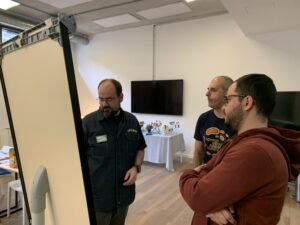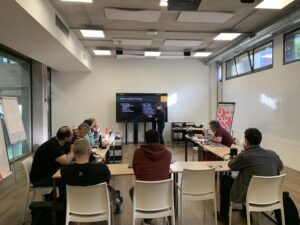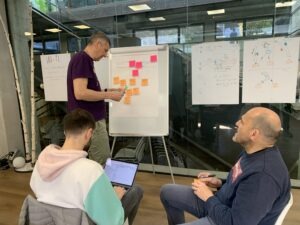How can we design software systems that remain adaptable and maintainable as our business needs evolve? How can we reduce risk and make confident architectural decisions in an unpredictable domain?
Modern software development demands a shift from rigid, upfront planning to adaptable, resilient design, especially when dealing with evolving business needs and unpredictable infrastructure behavior.
Residuality Theory provides a revolutionary approach to tackling these challenges effectively.
In the Residuality Theory, we combine ideas from philosophy, the complexity sciences, and software engineering to produce a very lightweight set of tools that help us to navigate uncertainty and to turn uncertain situations into coherent software architectures without any hand waving, hocus pocus or magical thinking – in a way that’s validated, verified and can work.
Join the three-day in-person Advanced Software Architecture with Residuality Theory Workshop with Barry O’Reilly and learn how Residuality Theory will help you think differently when building robust, antifragile software that is fit for uncertain times.
Learning Objectives
In this workshop, you will explore the philosophy of architecture, challenging yourself to think beyond technology and connect decision-making to markets, culture, economics, and societal dynamics.
You’ll gain practical techniques in stressor analysis and matrix-based decision-making, applying them hands-on in labs and group exercises.
After completing the course, you and your team will align around a shared understanding of architecture, fostering clearer communication and stronger collaboration.
The Trainer
Barry O’Reilly is a Software Architect and Ph.D. in Complexity Science and Software Engineering at The Open University.
He has held leading roles at global software companies and has spent many years educating architects.
Author of two cutting edge books:
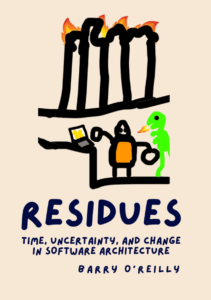
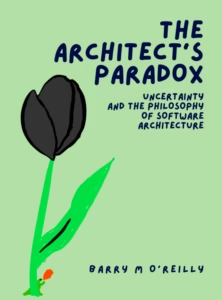
Target Audience
The Advanced Software Architecture with Residuality Theory Workshop workshop is suitable for:
- Architects working in complex environments,
- Senior Developers who want a head start in the world of architecture
- Teams embarking on large, risk-filled projects.
Agenda
Day 1
- Concrete Complexity for Software Engineering
- Philosophy of Architecture
- Representation in Architecture
- Residuality Theory
- Attractor networks.
Day 2
- Modelling stress: socio-economic architecture
- Defining residues
- Surviving unknown unknowns
- Producing a real-world architecture.
Day 3
- Contagion analysis and component decisions
- Adjacency matrix techniques
- Incidence matrix techniques
- Testing the architecture.
F.A.Q.
Do I need to know something beforehand in order to participate in this workshop?
You’ll get the most out of this workshop if you already have a good understanding of software design.
Do I need my laptop to attend this workshop?
You’ll need a laptop with Excel/Google Sheets.
About the workshop
Language: The workshop will be held in English.
Time: from 9.30 am to 5.30 pm.
Venue: TAG Calabiana
Laptop: required
Included in the price: arrival coffee break, lunch and afternoon coffee break, each day.
Not included in the price: travel and accommodation.
How to get to Milan?
You can get to Milan by flying into one of its three international airports.
Check out the TAG Calabiana Info Page and get it sorted! With plenty of handy information on accommodation, travel options, where to find the training venue, and much more!
Questions? Drop us a line: [email protected]
Testimonials
Barry’s core idea of residuality is pretty simple, but absolutely not trivial nor legacy.
The fancy takeaway is that, even with its simplicity, it enables a very effective new approach to system architecture evaluation and review. In the meantime, he defines an easily computable numerical metric that allows you to measure whether your reviewed solution is improving or not compared to the previous iteration.
Being simple and effective makes it really worth investigating, even if adopting it may require reviewing—and possibly dropping—some legacy tools that have repeatedly failed to deliver the expected insights, regardless of the amount of praise and words spent preaching them.Giulio Cesare Solaroli
I loved the time spent with such remarkable colleagues and Barry O’Reilly as a mentor during the Advanced Software Architecture Workshop – Design software systems for complex business environments with Residuality Theory, organized by Avanscoperta.
The certificate of attendance is a little thing compared to other amount and quality of notions Barry can transmit, and I’m glad to Avanscoperta for bringing him to Italy. This has been really going “in Avanscoperta”!Federico Caprari
This has been a fun and challenging experience. It was challenging because it is awesome to see some scientific rigour applied to our industry, where we still tend to make decisions based on intuition.
This has nicely messed up my mind in very fun ways and leaves me hungry to discover more.
I look forward to letting these thoughts mess with the quick assumptions we’re used to making and to continuing to change my perspectives.
It was also great to do this workshop with a very nice crown. I deeply enjoyed the debates and chats, which added to the already high value of the experience.Sebastián Ramírez Magrì
I would recommend this workshop to those who already have a fair amount of experience with the design of distributed systems of a certain complexity and are looking for tools for concrete evaluation of architectures, and new visions of design. It is a workshop that should be approached with a very open mind.Alberto Acerbis



